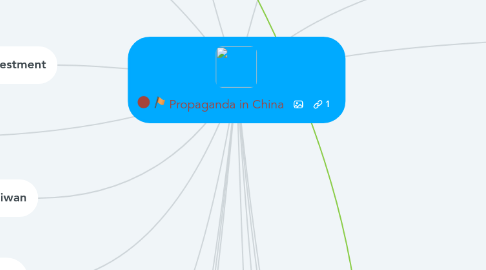Propaganda in China
Kw Fuにより


1. suspension of bilateral relationship
2. confucius institutions
2.1. Falun gong
2.2. traditional belief
3. Using Chinese to influence censorship policies abroad (Cambodia)
4. tools
4.1. Use of slogans
4.2. CCTV
4.3. Poster
4.4. social media
4.5. News report
4.6. Radio
5. China dream
6. Censorship
6.1. self censorship
6.1.1. weibo/wechat post
6.1.2. Deleting own posts on Wiebo/Wechat public accounts
6.1.3. Self-removal of articles by news companies
6.1.4. Precaution when typing/posting
6.1.5. Even in private chats
6.2. state censorship
6.2.1. national pride
6.3. state censorship e.g. hiding number of casualties of hazards
7. Money and investment
7.1. authoritarianism
7.2. BRI
7.3. Funding political parties in the U.S., e.g. Cindy Yang
8. state power
8.1. soft power
8.1.1. exporting Chinese cultural content
8.1.1.1. Chinese drama
8.1.1.2. Chinese music
8.1.1.3. Chinese films
8.1.1.4. CGTN, CCTV abroad
8.1.2. journalist training
8.1.2.1. Belt and Road journalist forum
8.1.2.2. Super China
8.1.3. Censorship in private chats (ex. WeChat)
8.2. sharp power
8.2.1. economic sanction
8.2.2. bribing foreign politicians
9. 結束一黨專政
10. Taiwan
11. showing off strength
11.1. Stance supporting the Party and the leader
11.2. showing economic strength
12. Expansion in South China Sea
12.1. New surface to air missiles in the region
12.2. More naval presence to counter the U.S.
13. Diaoyu Islands/Senkaku
13.1. 中國一点都不能少
14. Internal
14.1. Internet censorship
14.1.1. 50 cent army
14.1.2. Banning of foreign social media
14.2. The media must be surnamed the party 黨媒姓黨
14.3. Newspapers: People's Daily
14.4. The intended audiences are citizens inside China
14.5. Using rap to attract Chinese audience
15. social media influence
15.1. e.g. tiktok
15.2. Casting doubt
15.3. Use role models/artists/idols to help deliver a message
15.3.1. Friends of China

